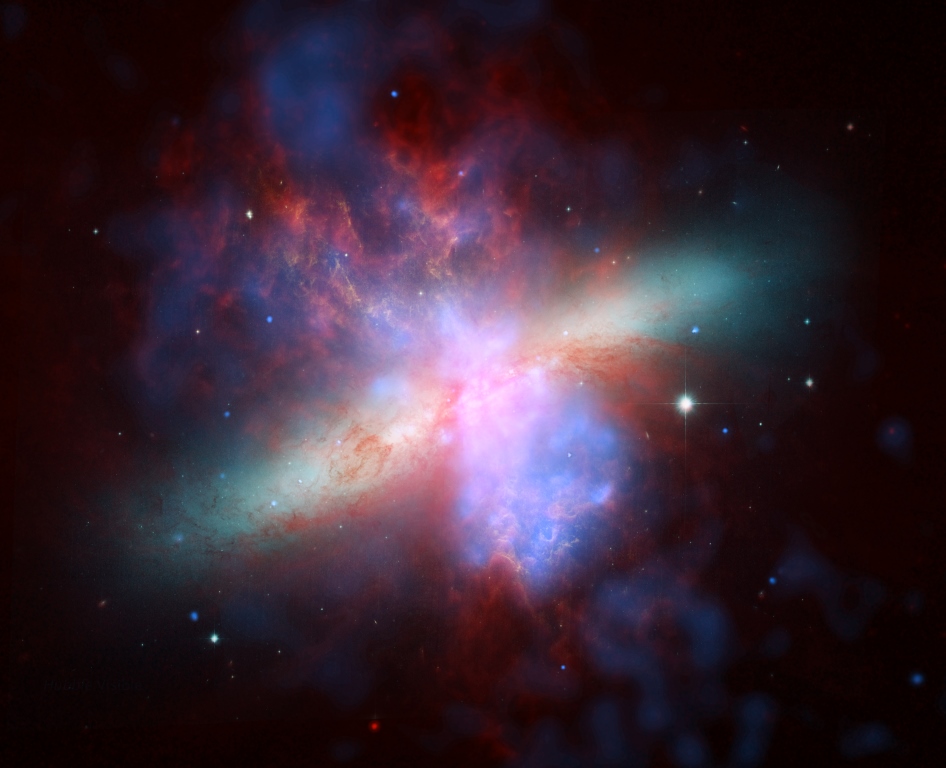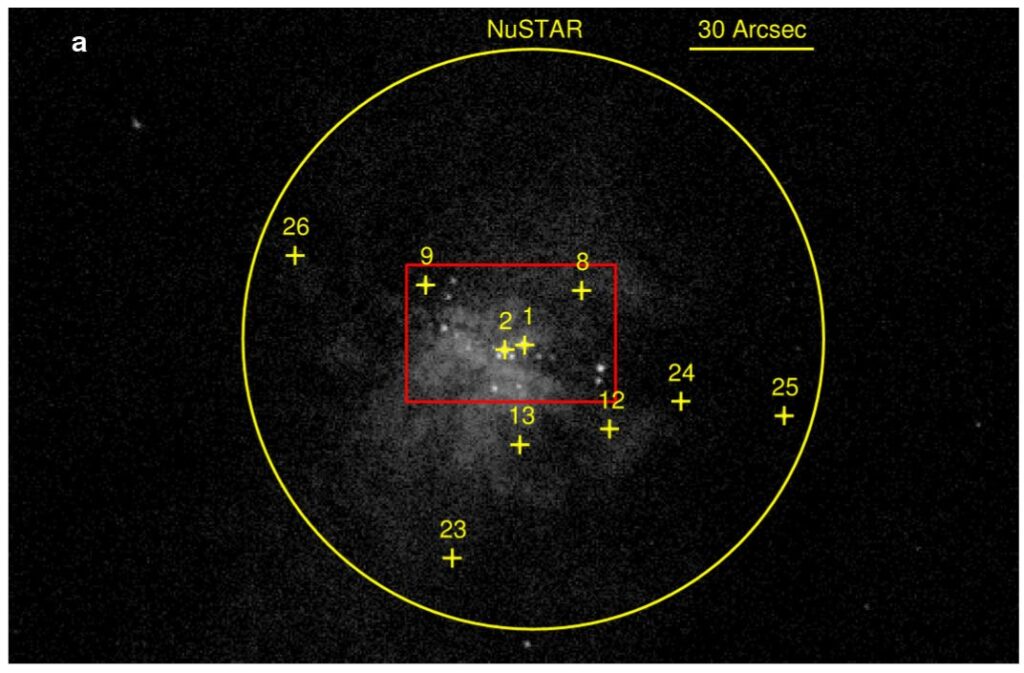A pulsating neutron star as bright as 10 million suns. It is the brightest pulsar ever observed.
 The discovery, made with the NuSTAR (Nuclear Spectroscopic Telescope Array) space telescope and published in the October 9 issue of Nature, shows that the brightest X-ray sources in galactic disks—previously always thought to be black holes—can actually be even smaller objects. Leading the international team that made the discovery was the young Matteo Bachetti (pictured), who graduated in Cagliari and is now at the Cagliari Astronomical Observatory but was at the time of the discovery at the Institut de Recherche en Astrophysique et Planétologie in Toulouse, France.
The discovery, made with the NuSTAR (Nuclear Spectroscopic Telescope Array) space telescope and published in the October 9 issue of Nature, shows that the brightest X-ray sources in galactic disks—previously always thought to be black holes—can actually be even smaller objects. Leading the international team that made the discovery was the young Matteo Bachetti (pictured), who graduated in Cagliari and is now at the Cagliari Astronomical Observatory but was at the time of the discovery at the Institut de Recherche en Astrophysique et Planétologie in Toulouse, France.
Pulsars are neutron stars, the incredibly dense remnants left by a supernova explosion when a star dies. They have the mass of one or two suns, concentrated in a sphere smaller than Rome. They could be considered failed black holes, as if they were a bit heavier—less than twice as much—they wouldn’t be able to support their own weight, collapsing further and becoming black holes.
The X-rays observed from neutron stars and black holes are generally produced when these compact objects capture matter. The more matter they capture, the more X-rays are produced. And the maximum amount of matter that can be captured depends on how “massive” the object capturing it is. Black holes, larger than neutron stars, can therefore be much brighter than neutron stars.
When astronomers observed extremely strong X-ray sources in nearby galaxies, known as Ultraluminous X-ray sources (ULX), they always attributed this emission to black holes. And since some of these sources are dozens of times brighter than the brightest known black holes in our galaxy, it was even thought for a while that these sources were very large black holes, over 100 times the mass of our Sun.

[A composite image of M82, the galaxy where the extremely bright pulsar was found – a composition of data from HST/Chandra/Spitzer. Credit: NASA/JPL-Caltech/STScI/CXC/UofA/ESA/AURA/JHU]
But from today, this approach must be considered incorrect. One of these sources, M82 X-2 in the M82 galaxy, about 12 million light-years from Earth, began to pulse rapidly at a certain point: astronomers immediately recognized in this pulsation the signature of a neutron star.
“When I saw the pulsations, I couldn’t believe it. For days, I thought it was a mistake and looked for a nearby source to X-2 that could contaminate the data,” explains the first author of the article, Matteo Bachetti, “The only way to get such fast and stable pulsations is to have a pulsar, that is, a neutron star.”

{%CAPTION%}
[In the image, the field observed by the NuSTAR telescope. In the red box, the position of the X-2 source.]
These stars indeed have a monstrous magnetic field, and when matter tries to fall onto the star, the magnetic field concentrates the fall into two small, extremely bright areas. Since the star rotates, these two bright areas behave exactly like a lighthouse lamp, producing the characteristic pulsed signal.
But how can such a small object be so bright? Astronomers are not yet sure. This neutron star seems to have the “diet” of a large black hole, and it will take serious theoretical and observational work to understand the exact mechanism that allows it.
The news comes just a few weeks after the discovery that another ULX extremely close to M82 X-2, called M82 X-1, is on the exact opposite side of the spectrum: a black hole 400 times the mass of the sun. This object is a rare example of an intermediate-mass black hole, considered the missing link between stellar black holes, which can reach up to about 100 times the mass of the sun, and supermassive black holes that reside in the centers of galaxies.